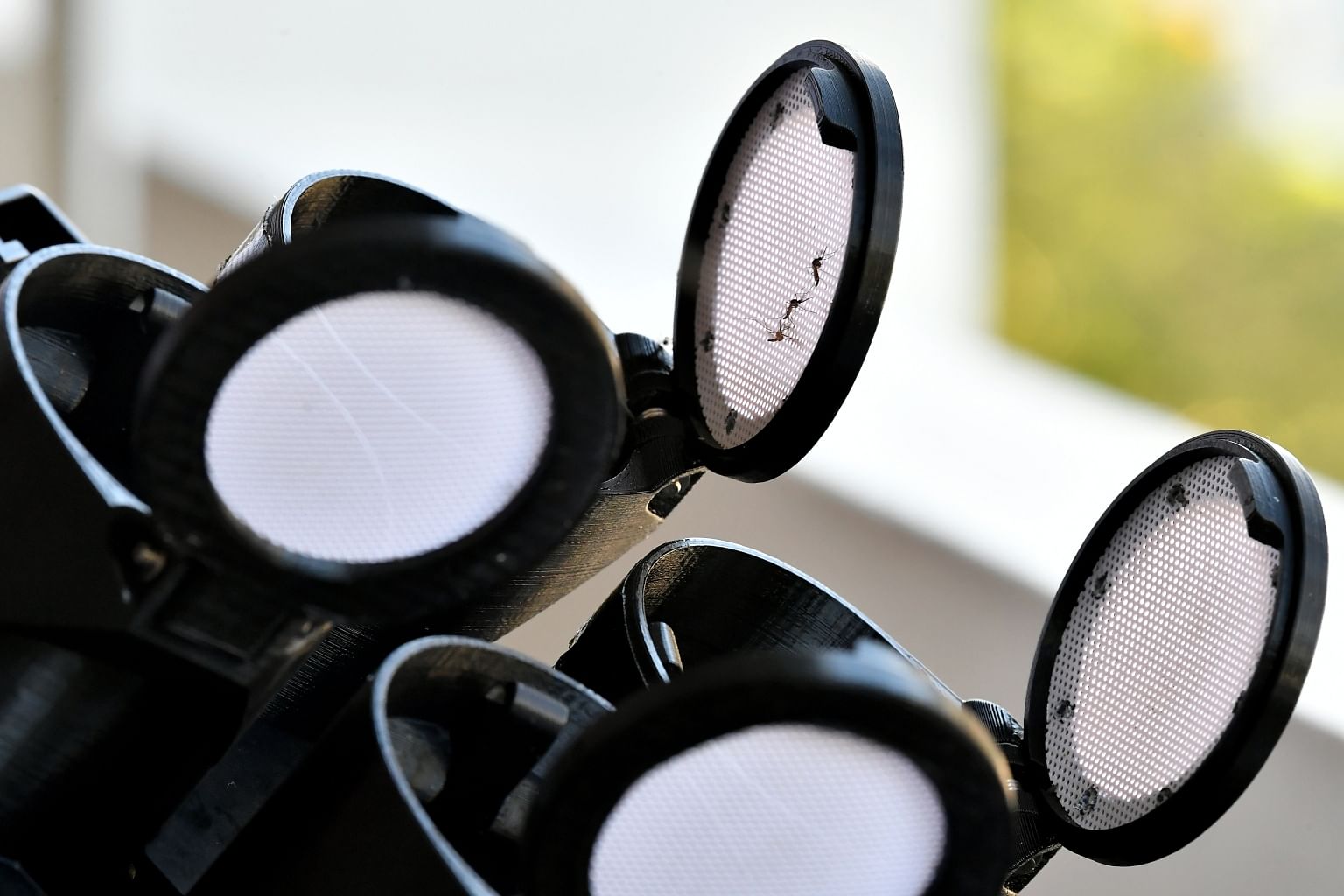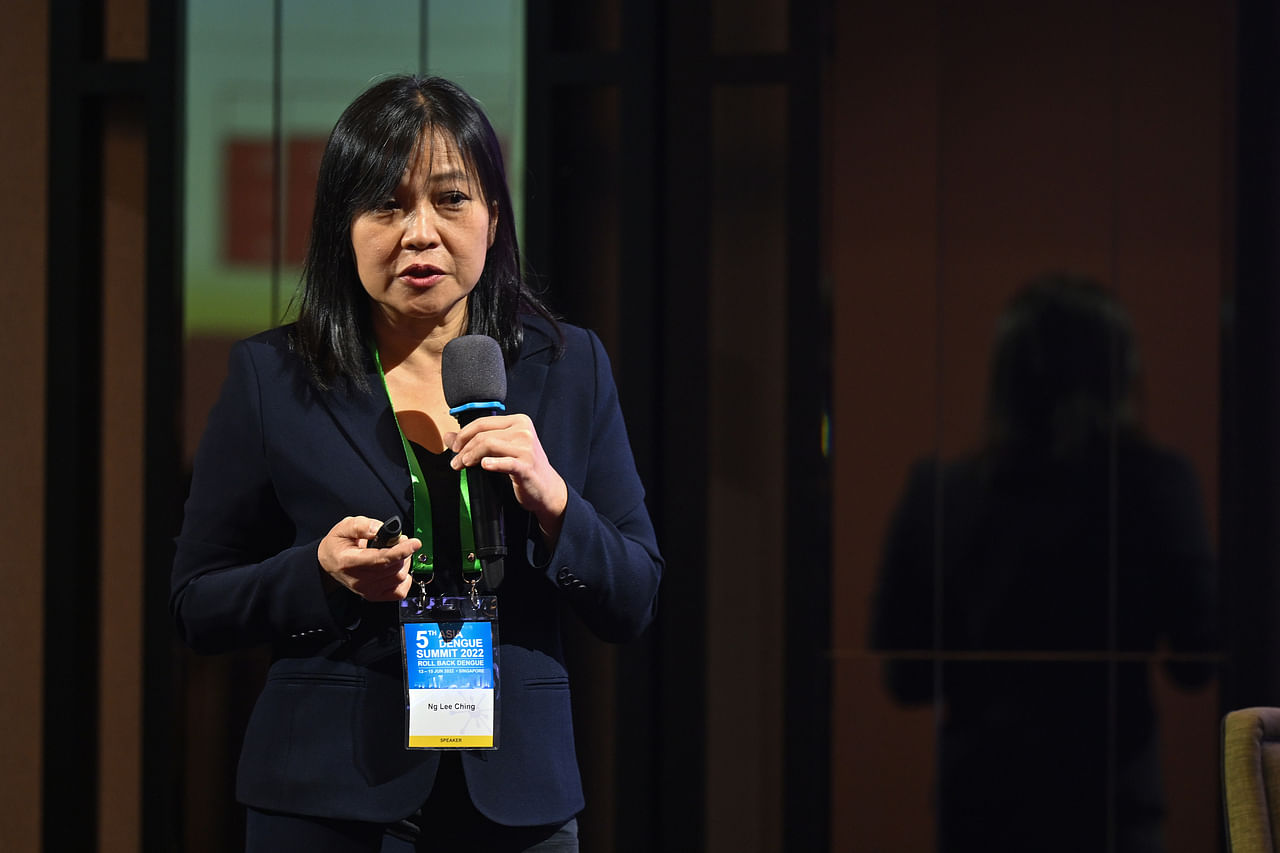Why Singapore’s dengue fight differs from that in some countries
Sign up now: Get ST's newsletters delivered to your inbox

Suppressing the mosquito population leads to a lower risk of dengue transmission.
ST PHOTO: LIM YAOHUI
Timothy Goh
Follow topic:
SINGAPORE - The Republic is currently in the middle of a huge dengue wave, with more than 15,000 cases reported in the first 24 weeks of this year.
As a result, it was announced on Wednesday (June 15) that Project Wolbachia, one of Singapore's weapons against the disease, will be expanded to cover about 31 per cent of Housing Board blocks here.
But Singapore's use of Wolbachia technology to combat dengue differs from some of its neighbours, including Malaysia, Vietnam and Indonesia.
Singapore's method involves the release of only male Aedes aegypti mosquitoes infected with the Wolbachia bacterium at selected sites.
When female Aedes mosquitoes which are not infected with the bacterium mate with the males, they produce eggs which do not hatch, thus reducing the population of Aedes aegypti mosquitoes.
This method is known as the suppression approach, and is used by about five other countries, including the United States, China and Thailand.
In contrast, about a dozen countries are using what is known as the replacement approach. In this method, Wolbachia-carrying males and females are released to mate with mosquitoes in the wild, breeding Wolbachia-carrying offspring.
As Wolbachia hampers the reproduction of viruses such as dengue, Zika, chikungunya and yellow fever, the plan is to replace the existing wild mosquito population with one that carries Wolbachia and is therefore less likely to transmit dengue and other mosquito-borne illnesses.
The replacement approach is used in countries such as Malaysia, Australia, Indonesia, Vietnam and Sri Lanka.
On Wednesday (June 15), Associate Professor Ng Lee Ching, group director of the National Environment Agency's Environmental Health Institute, said that both methods show very good promise in controlling dengue.
However, speaking at the fifth Asia Dengue Summit, held at Orchard Hotel from June 13 to 15, she cited five reasons why Singapore has chosen the suppression approach rather than the replacement one.
First, suppressing the mosquito population leads to a lower risk of dengue transmission.
Singapore has a low mosquito population size, and the replacement strategy, which relies on mosquitoes breeding, may potentially increase this.
A larger mosquito population may mean the Republic is unable to control the ability of the mosquitoes to transmit dengue, said Prof Ng, who is also director of the World Health Organisation's Collaborating Centre for Reference and Research of Arbovirus and their Associated Vectors.
Second, the replacement approach carries the risk that viruses may be able to evolve and adapt to overcome Wolbachia's blocking effect in the long run. In contrast, the suppression approach means there is less opportunity for viruses to evolve.
Third, the suppression approach, which releases only male mosquitoes - which do not bite - is more acceptable to the public, said Prof Ng. This approach will also reduce the rate of people getting bitten.
Fourth, the suppression approach is consistent with Singapore's policies and public messaging on the importance of source reduction, which have been emphasised over the past six decades.

Fifth, it is still possible to switch to the replacement approach after carrying out the suppression method, whereas it is more difficult to suppress the population after using the replacement method, said Prof Ng.
She acknowledged, however, that the suppression method is costlier, and requires a sustained effort to maintain.
Nevertheless, Prof Ng added that Project Wolbachia has been successful in Singapore so far.
She said: "As Project Wolbachia successfully suppresses the population of dengue vector in release sites, the community is urged to cooperate with the programme in preventing the resurgence of mosquito abundance by removing mosquito-breeding habitats.
"Having breeding sources of mosquitoes in the community will reverse the impact achieved by the technology."


